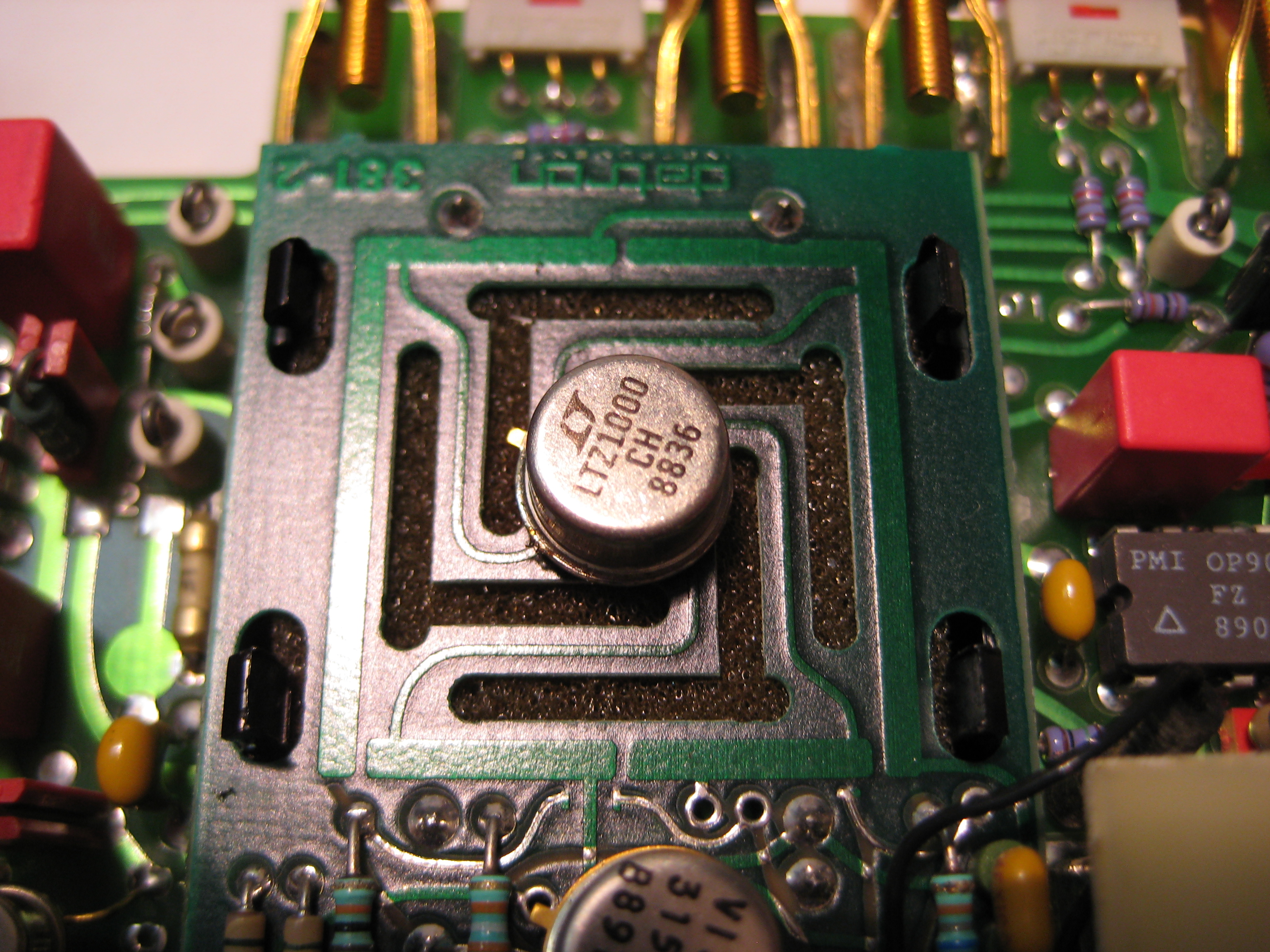Thanks for the answers so far, so AFAIU, it's not a (completely) crazy idea, just hard to be done, but who doesn't love a challenge

, now for some punctual answers, in order:
@Echo88: Well, a lot of things could be bought used, but there are different degrees of used, knowing my luck I'll end with the one that had the elcos vomiting their soul over the irreplaceable parts

.
If I'll ever manage to produce something resembling some stability I'm sure that some forum members with cool toys can be bribed to help me characterize it

.
The idea here it's not to get some used parts from existing calibrators and stitch them somehow together, but a new design that somehow it's in spirit of the old one, and the Datron design is free of unobtaniums and doable with what I have, of course if you or other forum member can recommend other interesting calibrator schematics, I'm all ears

.
The Datron 4910 seem to be a set of 4 LTZ1000 based 10V references in the same box, the isolation cuts reminds me of something

:

Anyway, we have a flurry of 10V references design, but just one gone calibrator project that died around 2016.
@Kleinstein: The proven track of reliability has to start somewhere, the digital part is at the level of Arduino/CPLD/ATiny and I will totally not use some obsolete compilers for 6800

. Same with the pulse transformers, there are plenty of them to chose from and they cost almost nothing, I don't think that they are something very special to switch a transistorized flip-flop, they have to be balanced and stable, I've seen a some nice candidates.
As I've said, I want to replicate the concept, not the old schematic, on the selection of parts/layout/orientation of tongue

, after the proof of concept, I'll definitely use the forum wisdom (you're on the first place on the list) and replace them with their best equivalents in order of influence of the overall quality. A resistive divider it's a divider, it can be made of high precision parts or of affordable parts, as long as we know what it influences, then this is it, the rich will get Vishay vacuum packaged dividers, the poor will put what they have/find, if the general schematic supports it, then it's OK.
So keep the suggestions, advice coming please, I'll try to answer to everybody, while getting to become friendly with Kicad and do a schematic of the main chopper, hopefully someone will help me with a way to simulate it, especially the Bessel filter.
Cheers,
DC1MC